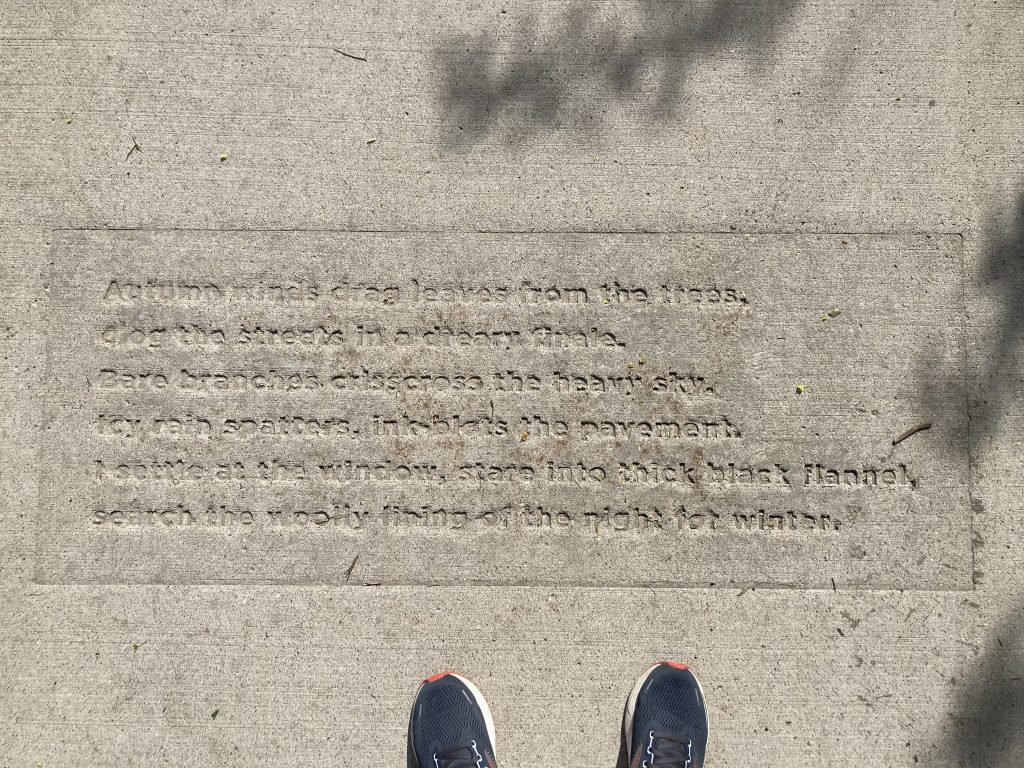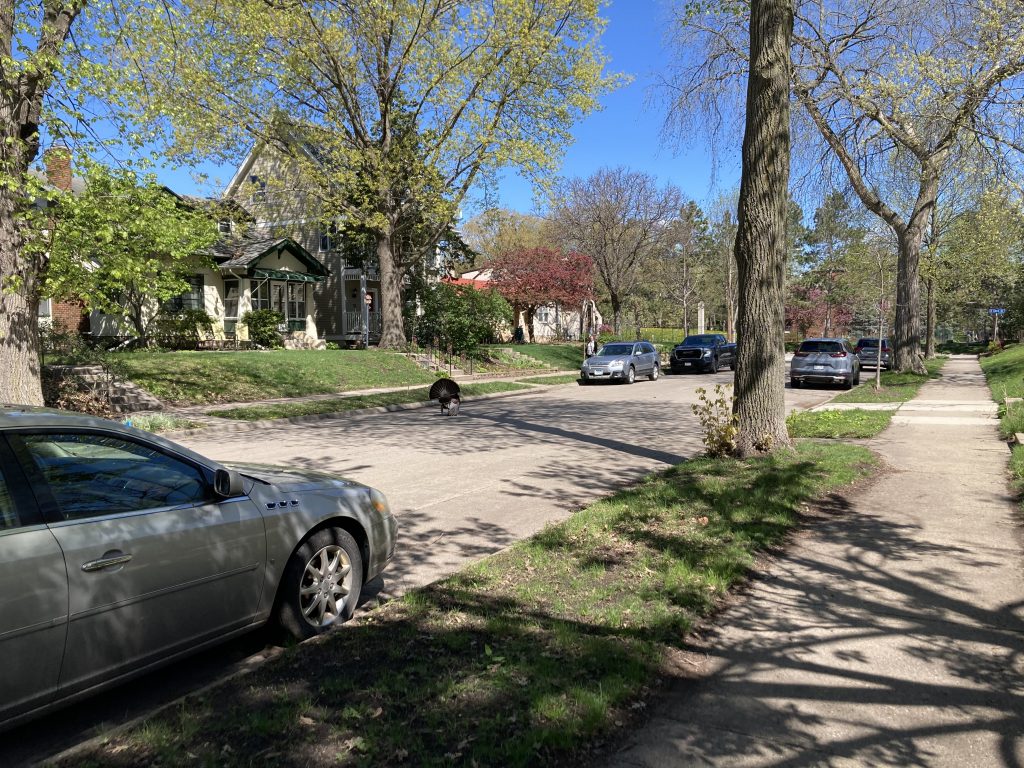7.5 miles
lake nokomis and back
59 degrees
Whew, that was hard. Running to the lake wasn’t too bad but on the way back, my legs were tired and I was hot and thirsty. I managed to bargain with myself — just keep going until you get to the water fountains or the light or the top of the hill — and do more running than walking in the second half. I think I needed to start earlier and bring some water.
I’m wiped out now, writing this, but I don’t care. It was worth it to get to run to Lake Nokomis and watch the glittering water, hear the seagulls, feel the lake air. Summer and open water swimming is coming! I signed myself, and FWA and RJP up for open swim this year! Will either of them swim? Hopefully at least once or twice. One more thing to note: looking out at the water, then to the little beach, I noticed the lifeguard boat — the main marker I use to navigate when I can’t see the buoys — has been moved. Hopefully it will be moved back again or I’ll have some difficulty sighting this summer.
Listened to the birds and the traffic and a song drifting out of a car window as I ran to the lake. Put in my “Slappin’ Shadows” playlist on the way back:
Moonshadow
Golden Years
The Shadow of Your Smile
I’m Beginning to See the Light
I’m Shadowing You
Shadow Dancing
If You Go Away
Hot Lunch Jam
Watching the Wheels / John Lennon
The last one about the wheels was just added last night. In addition to watching the wheels going ’round, he’s also doing time, watching the shadows on the wall. After he’s done singing, the song ends with random street noise: clopping horses, a person’s foot steps, someone talking. The clopping horses made me think of one of the rooms in an exhibit at Minneapolis Institute of Arts (MIA). You sit on a bench in the room as a day cycles through, complete with the light changing throughout the day to simulate dawn, midday, dusk, evening, and with a recording of sounds outside of the room, including . . . horses clopping. I recall having some deep thought about shadows and my relationship to them as I listened to this song, but I can’t remember what it was. I recall having a general feeling of agreement: letting it go and just watching the wheels go ’round or the shadows on the wall sounds good to me!
One other random shadow thing I remember: In the middle of the night, during one of 3 or 4 sessions of being restless and getting out of bed, I looked around the room and noticed the shadows. The moon must have been bright last night because there were lots of shadows even though we have the blinds closed. At one point, a car drove by and their headlights looked cool and strange traveling across the wall.
As I ran along the creek and switched from sun to shade to sun again, I thought about how welcome shade is on a too sunny day. When I’m running in the spring and summer, I almost always cheer for the shadows and the coolness they offer.
Yesterday I picked up a book I requested from the library, Margaret Livingstone’s Vision and Art. Very cool. I got it so I could read more about how artists have used luminance and shadows and light to create images that look real.
Another thought I recall as I drifted in and out of sleep last night: I’d like to think about how the way artists manipulate light and shadow to create their illusions of realness, might be similar to how the brain does it for us. The brain as an artist — filling in, filtering, transforming signals into images that we can use and admire.
Yesterday I revisited Jorie Graham’s poem, “Still Life with Shadow and Fish” and understood it in a way I hadn’t before. Wow! I decided to listen to/read something else by her. Listening to this recording helped me to understand it a little better.
Two Paintings by Gustav Klimt/ Jorie Graham
Although what glitters
on the trees,
row after perfect row,
is merely
the injustice
of the world,
the chips on the bark of each
beech tree
catching the light, the sum
of these delays
is the beautiful, the human
beautiful,
body of flaws.
The dead
would give anything
I’m sure,
to step again onto
the leafrot,
into the avenue of mottled shadows,
the speckled
broken skins. The dead
in their sheer
open parenthesis, what they
wouldn’t give
for something to lean on
that won’t
give way. I think I
would weep
for the moral nature
of this world,
for right and wrong like pools
of shadow
and light you can step in
and out of
crossing this yellow beech forest,
this buchen-wald,
one autumn afternoon, late
in the twentieth
century, in hollow light,
in gaseous light. . . .
To receive the light
and return it
and stand in rows, anonymous,
is a sweet secret
even the air wishes
it could unlock.
See how it pokes at them
in little hooks,
the blue air, the yellow trees.
Why be afraid?
They say when Klimt
died suddenly
a painting, still
incomplete,
was found in his studio,
a woman’s body
open at its point of
entry,
rendered in graphic,
pornographic,
detail—something like
a scream
between her legs. Slowly,
feathery,
he had begun to paint
a delicate
garment (his trademark)
over this mouth
of her body. The mouth
of her face
is genteel, bored, feigning a need
for sleep. The fabric
defines the surface,
the story,
so we are drawn to it,
its blues
and yellows glittering
like a stand
of beech trees late
one afternoon
in Germany, in fall.
It is called
Buchenwald, it is
1890. In
the finished painting
the argument
has something to do
with pleasure.

